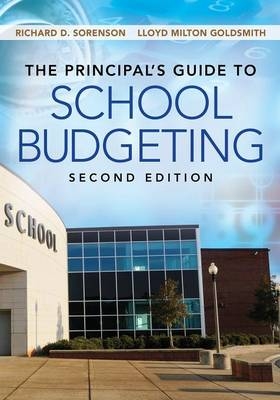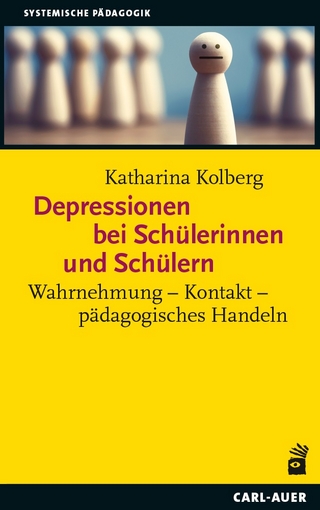
The Principal′s Guide to School Budgeting
Corwin Press Inc (Verlag)
978-1-4522-5547-7 (ISBN)
- Titel erscheint in neuer Auflage
- Artikel merken
Learn how to create a winning school budget during challenging economic times.
Effective administrative practices, both fiscal and academic, are continually being redefined at all levels. Developing budgets that keep up with economic changes and instructional expectations is a challenge.
This best-seller steps leaders through the budgeting process, with vision and planning as firm guides to resource allocation. Emphasizing tough budgetary climates, the book includes a budget model that shows how to align organizational goals with a sound fiscal accountability system.
This new edition features
"25 tips for budgeting during an economic downturn
"Analysis of real school action and budget plans
"Methods for conducting a needs and program assessment
"Answers to some of the toughest budgeting dilemmas
"Case study applications and problems
"Budgeting checklist for administrators
"Selected templates, forms and resources
"Discussion questions and experiential activities
Showcasing real school scenarios and national standards, leaders learn to plan a budget, monitor funds, evaluate budget reports, and prepare school action plans that keep students achieving in fiscally difficult times.
Learn more about Richard Sorenson′s PD offerings Richard D. Sorenson, professor emeritus, is the former director of the Principal Preparation Program and chairperson of the Educational Leadership and Foundations Department at The University of Texas at El Paso (UTEP). He earned his doctorate from Texas A&M University at Corpus Christi in educational leadership. Dr. Sorenson served public schools for 25 years as a social studies teacher, assistant principal, principal, and associate superintendent for human resources. Dr. Sorenson worked with graduate students at UTEP in the area of school-based budgeting, personnel, educational law, and leadership development. During his 20-year tenure, he was named The University of Texas at El Paso College of Education Professor of the Year, and he remains an active writer with numerous professional journal publications. Dr. Sorenson continues to author other principal-oriented textbooks. He also developed teacher resource guides, and workbooks in the area of the elementary and secondary social studies curricula. He has been actively involved in numerous professional organizations, including the Texas Elementary Principals and Supervisors Association (TEPSA) and the Texas Association of Secondary School Principals (TASSP), for which he conducted, for a decade, annual new-principal academy seminars. Dr. Sorenson has been married to his wife, Donna, for the past 48 years and they have two adult children, Lisa (a school counselor with the Cypress-Fairbanks Independent School District in Houston, Texas) and Ryan (an exercise physiologist in Dallas, Texas); a wonderful son-in-law, Sam (a petroleum engineer in Houston, Texas); and a delightful daughter-in-law, Nataly (executive director of a Christian center in Dallas, Texas) along with four amazing grandchildren: Savannah, Nehemiah, and Amelia, and one little guy, Oliver—all of whom are the pride and joy of his life. Rick and Donna, long-term residents of El Paso, out in the mountain and desert region of “true” West Texas, now reside near their grandchildren in Cypress (northwest Houston), Texas. Lloyd M. Goldsmith, professor emeritus, earned his EdD in educational leadership from Baylor University. He was a professor for 20 years at Abilene Christian University (ACU), some of those years at ACU (Dallas), where he taught doctoral courses in leadership theory. He also served as an admissions officer as well as a former director of the Principal Preparation Program and department chairperson at ACU. Dr. Goldsmith taught school budgeting, instructional leadership, and leadership theory. He served public schools for 29 years as an elementary science teacher, middle school assistant principal, and elementary school principal. Dr. Goldsmith and a fellow chemistry professor codirected a program facilitating high school chemistry teachers in developing effective instructional strategies. Dr. Goldsmith served on several state committees for the Texas Education Agency. He also served two terms as president of the Texas Council of Professors of Educational Administration. He is an active member at his church and enjoys serving others. He spends time volunteering at his grandchildren’s schools and supporting their activities. He also enjoys traveling and attending ACU sporting events. Dr. Goldsmith has been married to his wife, Mary, for the past 40 years. They reside near their three children and families in Abilene, Texas. Mary is a retired high school biology teacher, serving students for 41 years. Lloyd and Mary have three adult children—Abigail (active in the PTO where she serves as president) and her husband, Andrew (works in business development for a nuclear research lab), Eleanor (a second grade Title I teacher), and her husband, Kris (a chef, restaurant owner and culinary arts teacher), and Nelson (a licensed professional building inspector) and his wife, Kristen. He also has four grandchildren, Luke, Hilary, Levi, and Oliver. Plus, the Goldsmiths’ have six grand dogs! Life is good!
Preface
Acknowledgments
About the Authors
Introduction
1. Understanding the Budgeting Process
The Basics of School Budgeting
Breaking the Budgeting Myths
Delineating Between School Finance and School Budgeting
Budgeting in Times of Economic Downturn and Fiscal Constraint
Allocation – The Key to the Budgetary Process
Sources of School Funding
Federal Sources of Income
State Sources of Income
Local Sources of Income
Ten Steps to Budgeting Success
Final Thoughts
Discussion Questions
Case Study Application: Fiscal Issues and the New Principal
Application Questions
Application Questions
Part II: "Well, It′s My Money!"
2. The Budget-Vision Relationship and the National Standards
The National ISLLC Standards
Shifts in Knowledge and Skills
From Technical Skills to Interpersonal Skills
From Director to Consensus Builder and Motivator
From Resource Allocation to Accountability
Examining the ISLLC Standards Through A Budget-Vision Lens
ISLLC Standard 1 – The Vision Standard
ISLLC Standard 2 – The Learning Standard
ISLLC Standard 3 – The Environment Standard
ISLLC Standard 4 – The Community Standard
ISLLC Standard 5 – The Ethics Standard
Examining Three Key Terms – The Trio
ISLLC Standard 6 – The Global Standard
Final Thoughts
Discussion Questions
Case Study Application: Belle Plain Middle School
Application Questions
3. Culture, Data, and Celebrating Success
Culture
Values
Beliefs
Attitudes
Data
Data-Driven Decision Making
Barriers to the Use of Data
Dimensions of Data
Data Types
Disaggregated Data
Longitudinal Data
Perception Data
Qualitative Data
Quantitative Data
Assessment
Acknowledging Opportunities for Growth and Development
Celebrating Success
Final Thoughts
Discussion Questions
Case Study Application: L. B. Jensen Middle School
Application Questions
4. A Model for Integrating Vision, Planning, and Budgeting
Sorenson-Goldsmith Integrated Budget Model
Leadership
Component 1: Defining Stakeholders
Component 2: Stakeholder Selection
Committee Size and Structure
Diversity
Committee Member Training
Staggering the Terms
Component 3: Data Gathering (Needs Assessment)
Component 4: Data Analysis
Component 5: Needs Prioritization
Component 6: Goal Setting
Component 7: Performance Objectives
Component 8: Action Plan
A Planning Metaphor
The Elements of an Action Plan
The GOSA Relationship
An Example
GOSA Mapping
Final Thoughts
P.S.
Discussion Questions
Case Study Application: Shifting Paradigms With Changing Times
5. Effective and Efficient Budgeting Practices
The Budget Plan
Adequate Funding in an Era of Accountability and Fiscal Constraint
Analyzing the School Action and Budget Plans
Performing an Information Analysis
Steps to Performing an Information Analysis
Conducting a Needs Assessment
Generated Income Sources
Grants
Fundraising
Expenditure Accountability and Control
Fiscal Education and Information Management System
Accounting Procedures
Collection and Deposit Structures
The School Activity Account
Components of the Collection and Deposit Structure
Timely Payment of Bills
Budget Amendments
Budgetary Systems
Function/Object Budgeting
Zero-Based Budgeting
School-Based Budgeting
Accounting and Auditing Procedures
Fraudulent Practices
Embezzlement
Other Risk Factors
The Leadership Role: Ethical and Moral Behaviors
Final Thoughts
Discussion Questions
Case Study Application: Sex, Money, and a Tangled Web Woven
Application Questions
6. Building the School Budget
Site-Based Decision Making
Why Site-Based Decision Making?
Who Builds the School Budget?
The School Leader
School-Site Administrators
Other Committee Members
School-Site Directors
Teachers and Grade-Level or Department Chairs
Central Office Administrators
Students
Community Members
School Budget Applications
Budget Allocations
Restricted Funds
Coding Applications
Activity 1: Utilizing Accounting Codes
Activity 2: Utilizing Accounting Codes
Projecting Student Enrollment
Important Budget Considerations
The Budget Calendar
The Budget Hearing and Defense
Final Thoughts
Discussion Questions
Case Study Application 1: Shifting Paradigms With Changing Times
Case Study Application 2: Requisition Season at Cover Elementary
Application Question
Case Study Application 3: The Budget Development Project
Chapter 6 Answers
Resource A. Selected Forms
Budget Development Spreadsheet
Strategy Page
Resource B. Experiential Exercises
Gladys Weatherspoon Case Study
The Budgeting Codes Activity
Accounting Codes Reference Sheet
Resource C. Budgeting Checklist for School Administrators
Resource D. State Departments of Education Websites
References
Index
| Erscheint lt. Verlag | 16.1.2013 |
|---|---|
| Verlagsort | Thousand Oaks |
| Sprache | englisch |
| Maße | 177 x 254 mm |
| Gewicht | 540 g |
| Themenwelt | Sozialwissenschaften ► Pädagogik |
| ISBN-10 | 1-4522-5547-4 / 1452255474 |
| ISBN-13 | 978-1-4522-5547-7 / 9781452255477 |
| Zustand | Neuware |
| Haben Sie eine Frage zum Produkt? |
aus dem Bereich



